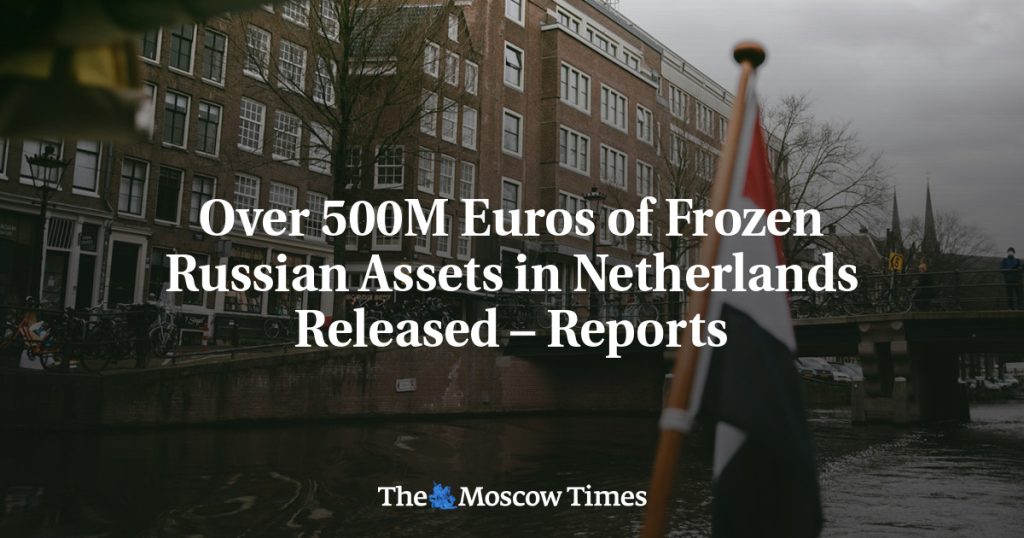The Netherlands has released over half a billion euros in frozen Russian assets held by Dutch banks and financial institutions, according to a report by De Telegraaf. Dutch Foreign Minister Caspar Veldkamp sent a report to parliament stating that only 97 million euros in private frozen Russian assets were held in the country, significantly lower than the 660 million euros reported earlier. The release of these assets was made possible by granting payment exemptions or suspending sanctions for the company owners. In one case, 230 million euros in frozen assets from an unnamed company were released because it “formally distanced” itself from its Russian owner.
The release of the frozen Russian assets in the Netherlands has raised questions about the approval process and reasons behind such decisions. The newspaper De Telegraaf highlighted the significant difference between the reported amount of frozen assets in the country and the actual amount that was released. It is unclear how the Dutch government reached the decision to release these frozen assets and what criteria were used to grant payment exemptions or suspend sanctions for the company owners. The report mentioned that the Ministry of Foreign Affairs approved the release of these assets, but the specifics of the approval process remain unknown.
The release of the frozen Russian assets in the Netherlands has implications for the broader relationship between the European Union and Russia. The sanctions imposed on Russia by the EU in response to its actions in Ukraine have been a point of contention between the two parties. The release of these assets may signal a shift in the EU’s stance towards Russia, prompting questions about the effectiveness of the sanctions and their impact on Russian assets held in EU countries. It remains to be seen how the EU will respond to the release of these frozen assets and whether there will be any repercussions for the Dutch government.
The release of over half a billion euros in frozen Russian assets in the Netherlands has sparked concern among critics who fear that the decision could undermine the effectiveness of sanctions against Russia. The sanctions were imposed in response to Russia’s annexation of Crimea and its role in the conflict in eastern Ukraine. Critics argue that releasing these assets sends the wrong message to Russia and weakens the EU’s position in negotiations with the country. The Dutch government will likely face scrutiny over its decision to release these assets and will need to provide transparency on the approval process and reasons behind it.
The release of the frozen Russian assets in the Netherlands has also drawn attention to the broader issue of asset freezes and sanctions enforcement in the EU. The EU has implemented various sanctions regimes targeting individuals and entities associated with Russia’s actions in Ukraine, but enforcement and compliance with these sanctions have been inconsistent across member states. The release of these assets in the Netherlands highlights the challenges of coordinating sanctions enforcement within the EU and ensuring that all member states adhere to the same standards. Moving forward, there may be increased pressure on the EU to strengthen its sanctions enforcement mechanisms and address any loopholes that allow for the release of frozen assets.
In conclusion, the release of over half a billion euros in frozen Russian assets in the Netherlands has raised questions about the approval process, implications for EU-Russia relations, and broader issues related to sanctions enforcement in the EU. The decision to release these assets has sparked concern among critics who fear that it could undermine the effectiveness of sanctions against Russia. Moving forward, the Dutch government will likely face scrutiny over its decision and will need to provide transparency on the approval process and reasons behind releasing these assets. The incident also highlights the challenges of coordinating sanctions enforcement within the EU and ensuring compliance across member states.


